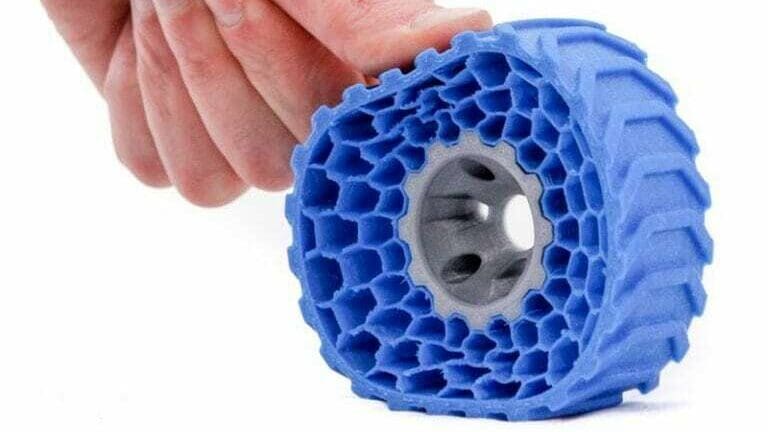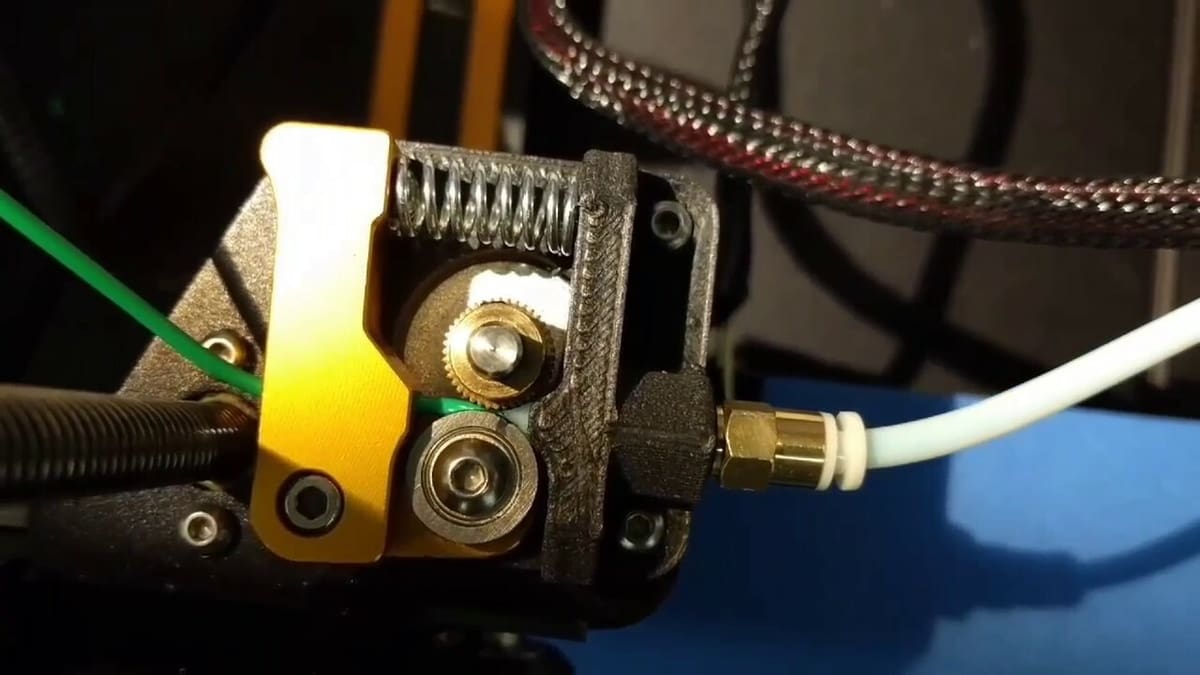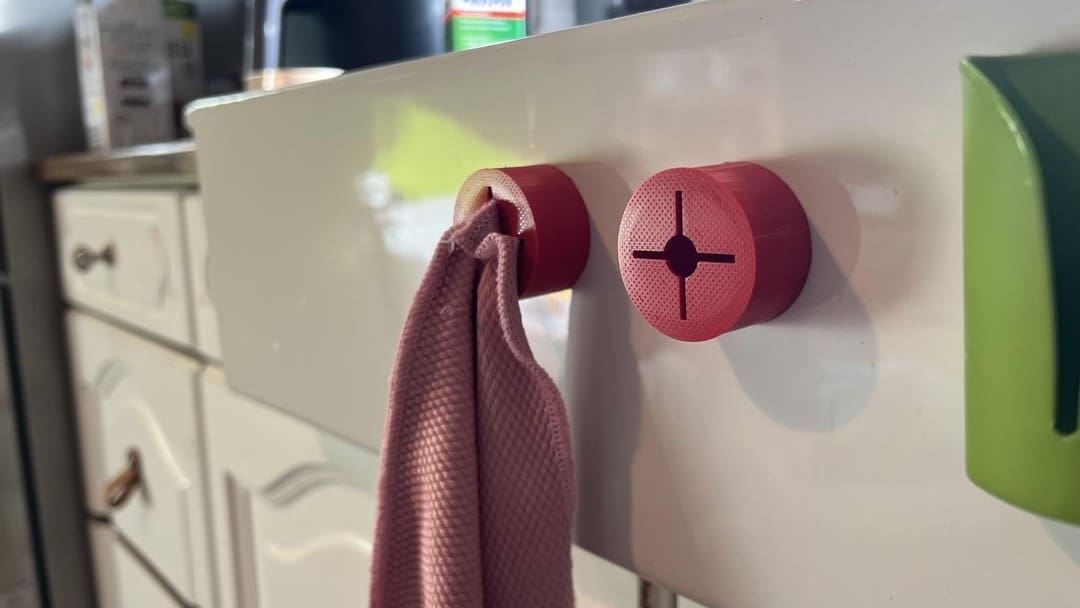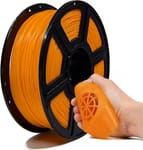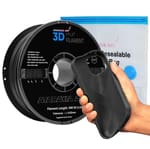If you’re printing an object you want to be soft, rigid filaments won’t cut it. You need something flexible, like soft PLA.
Soft PLA is a special type of PLA with the characteristics of rubber. Also called flex PLA or flexible PLA, this filament is treated with additional additives that take away much of the natural brittleness of regular PLA. The result is an elastic material suitable for printing flexible parts, such as phone cases, insoles, and watch wristbands.
It’s often compared with TPU, a popular type of flexible filament. Although the two filaments can both withstand bending and stretching, flexible PLA isn’t a complete substitute for TPU. This article will discuss the material properties and what you can expect from flexible PLA. We’ll also cover how to have success when printing flexible PLA and how it compares to TPU.
At a Glance
What are Flexible Filaments?

As a quick refresher, filaments for FDM are thermoplastics, meaning they can be melted and resolidified without loss of properties. Thermoplastics are made of long, chain-like molecules called polymers. If you could look at the polymer that makes up flexible filament materials, you would be able to see both rigid and soft segments. The macroscopic properties of the material that we observe depend on the ratio of these two regions.
This makes it possible to print materials that are quite soft and can snap back like a rubber band as well as tough rubber-like materials similar to car tires that flex with force but otherwise maintain a firm shape.
There are a few types of flexible filament out there, all with their own characteristics and strengths:
- TPE: Short for thermoplastic elastomer, TPE is often used as a generic term for flexible filament, as it covers a broad range of flexible materials.
- TPU: Short for thermoplastic polyurethane, TPU is slightly more rigid than TPE, which makes it easier to print with typical extruders. It can be found in a wide variety of Shore hardnesses.
- TPC: A thermoplastic co-polyester that comes from a slightly different approach to tailoring the flex properties of plastic. While a range of properties is possible, TPCs are generally softer than TPUs and have very stretchable behavior.
- PCTPE: Short for plasticized copolyamide TPE. That means this flexible filament has nylon in its mix, which adds nylon’s durability to TPE’s flexibility. However, this pushes PCTPE to the more rigid side of flexible materials.
- Flexible PLA: This is a flexible variant of polylactic acid (PLA), one of the most common 3D printing filaments. It comes from mixing plasticizing additives with PLA, rather than adding soft segments to its structure like TPE materials. Read on to discover its awesome properties!
Material Properties
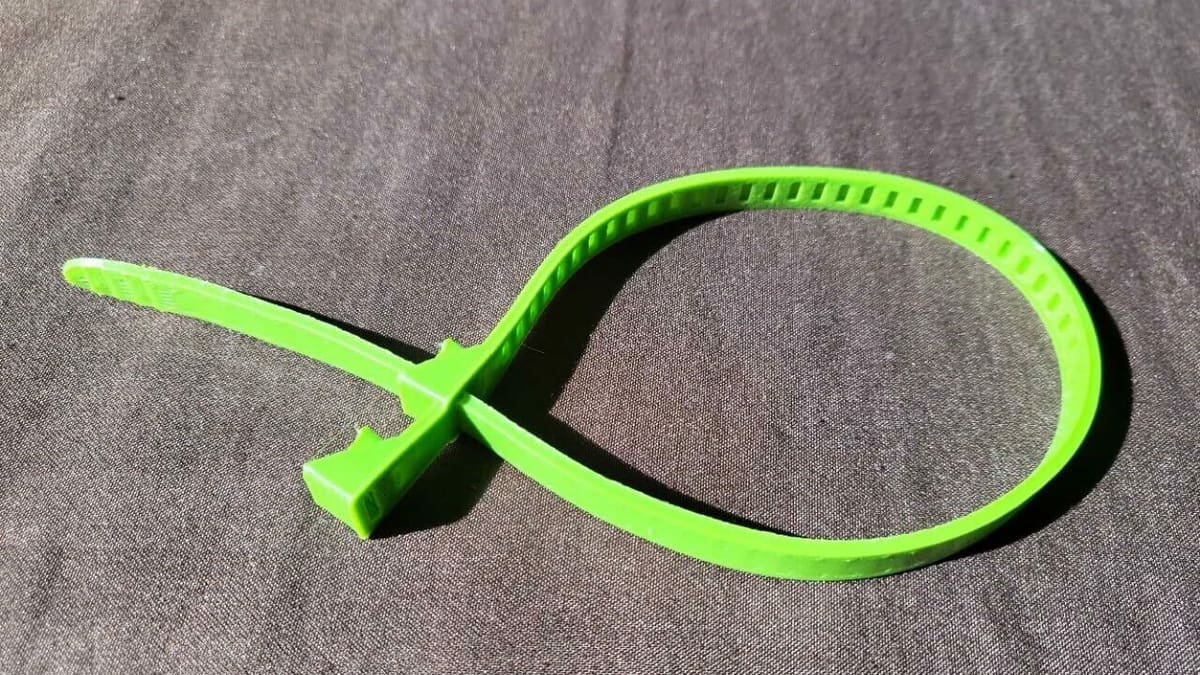
Flexible PLA and normal PLA share many similarities because they have the same base material. However, the two materials also exhibit distinct differences in their strength, durability, and other material properties.
Strength
Flexible PLA can withstand manipulations to its shape when pressure is applied, springing back to its original form once the pressure is taken off. This is one of the properties that sets it apart from normal PLA, which is relatively brittle. On the other hand, flexible PLA is not suitable for weight bearing due to its tendency to bend.
Flexible PLA also retains the ability of rubber to absorb vibrations and impacts. It’s useful for objects like tires that need to keep their shape but are constantly exposed to forces that would break or crack a brittle material over time.
Durability
Like normal PLA, flexible PLA doesn’t do well with long-term UV exposure. Flexible PLA objects that will stand long in the sun may suffer from embrittlement or color fading. It’s also not very heat resistant, as it has an even lower glass transition temperature than standard PLA. Keeping it in the sun on a hot day may lead to deformation and part failure.
Food Safety
If you’re looking for a filament to print kitchen gadgets with, you should always check if the manufacturer adheres to food-safe processing standards, no matter the material. While PLA is inherently food-safe, additives and processing methods may not be, so there’s no single answer here. The cleanliness of your own printer equipment and the post-processing of the part also play a role in making a printed part food-safe.
In general, flexible PLA can be food-safe at low temperatures. Since it’s not very good at resisting high temperatures, flexible PLA should not be heated or used to hold hot food.
Hygroscopy
Flexible PLA is hygroscopic, meaning it can absorb moisture from the surrounding environment over time. This moisture absorption can degrade the filament’s flexibility and print quality, leading to all kinds of printing problems from warping to surface defects. If stored correctly, flexible PLA can maintain its properties for an extended period, ensuring consistent printing results.
To keep the filament in top shape, it should be stored in airtight containers with desiccant packs or vacuum-sealed bags away from direct sunlight and moisture. Additionally, drying the filament before printing can help restore its properties.
Recycling
Due to the additives used to make flexible PLA soft, it shouldn’t be added to any PLA recycling stream. With unique thermal and mechanical properties, the recycling of flexible PLA is currently not avalible at any filament recycling service as far as we could find. If you’re inclined to reduce your material usage, focus on recycling your normal PLA filament scraps or purchase recycled filament.
Print Settings
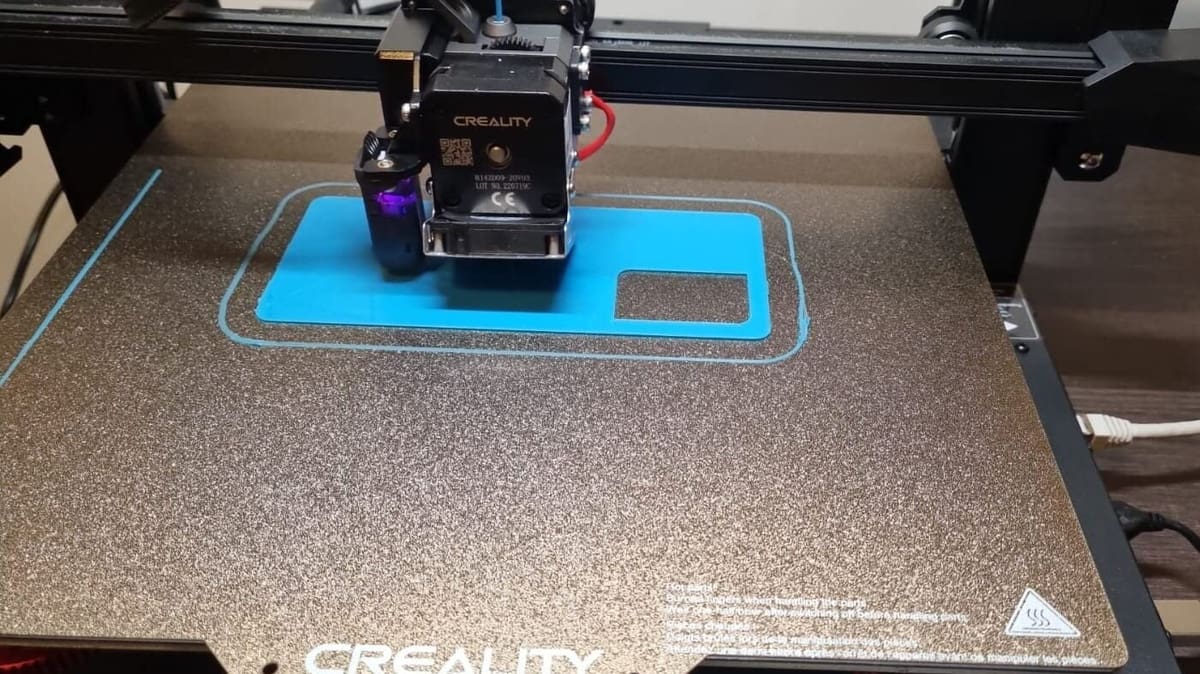
Flexible PLA shares many printing characteristics with normal PLA. However, due to its differences in properties, you may need to tweak temperature, print speed, layer height, and retraction settings to print soft PLA successfully.
Temperature
Flexible PLA typically requires a lower printing temperature compared to standard PLA. A temperature range of 190°C to 220°C is common, but it’s essential to check the manufacturer’s recommendations for the specific filament you’re using.
Flexible PLA usually adheres best to a heated print bed. A bed temperature of around 40°C to 60°C is often sufficient to help with bed adhesion and minimize warping. However, if your printer has a non-heated bed, applying a layer of blue painter’s tape or a glue stick can help with adhesion.
Speed
Printing with flexible PLA may require slower print speeds compared to rigid PLA. The filament may stretch when the extruder pulls on it, leading to inaccuracies and print defects like under-extrusion and filament bunching in the extruder. Slowing down print speed is the first action you can take to combat this. A speed of around 20 mm/s is a good starting point, but always check the filament manufacturer’s recommendation. How much you tweak the speed depends on the complexity of the print and your extruder type.
Bowden extruders have slower print speeds compared to direct extruders due to the increased distance between the extruder motor and the hot end. With a direct extruder, the extruder motor is positioned closer to the hot end, resulting in more immediate and precise control over filament extrusion.
Retraction
Retraction settings control the amount of filament that is pulled back from the nozzle when the print head moves between different parts of the print. Adjusting retraction distance and speed is necessary to avoid stringing and blobs, which can particularly affect flexible filaments. Direct extruders provide better control over filament feeding and retraction because they feed the filament directly into the hot end.
Values are typically in the range of 1 to 5 mm for distance and 20 to 40 mm/s for speed, but this is generally too high for flexible filaments. The softer the PLA, the less retraction you should use. Direct extruders can allow for more retraction than Bowden extruders. You can always start on the lower side of the typical retraction values you’d use for PLA and use a retraction test print to dial in the right settings for your soft PLA. For Bowden extruders, minimal to no retraction is recommended.
Cooling
Flexible PLA doesn’t have much in terms of special cooling requirements, but it may help to have low cooling to prevent stringing and to ensure success with overhangs and bridges. On the first few layers, disable the fan to ensure sufficient bed adhesion. You may even be able to print the whole part without a fan if the geometry is simple enough.
Due to the particularly low melting point of flexible PLA, enabling settings like minimum layer time (try 30 seconds to start) helps prevent too much heat from building up and affecting the part quality. If you’re using an enclosure, try printing with the door or flap open to prevent the camber from getting too warm.
Post-Processing
Flexible PLA may require some post-processing because the filament doesn’t produce the smoothest surface finish and will likely suffer from some stringing. Luckily, you can clean up flexible PLA similar to how you would smooth a normal PLA print. As long as your flexible PLA variant isn’t too soft, use 220-grit sandpaper on the whole object and a file in the rougher spots to create a smooth finish.
Flexible PLA vs. TPU
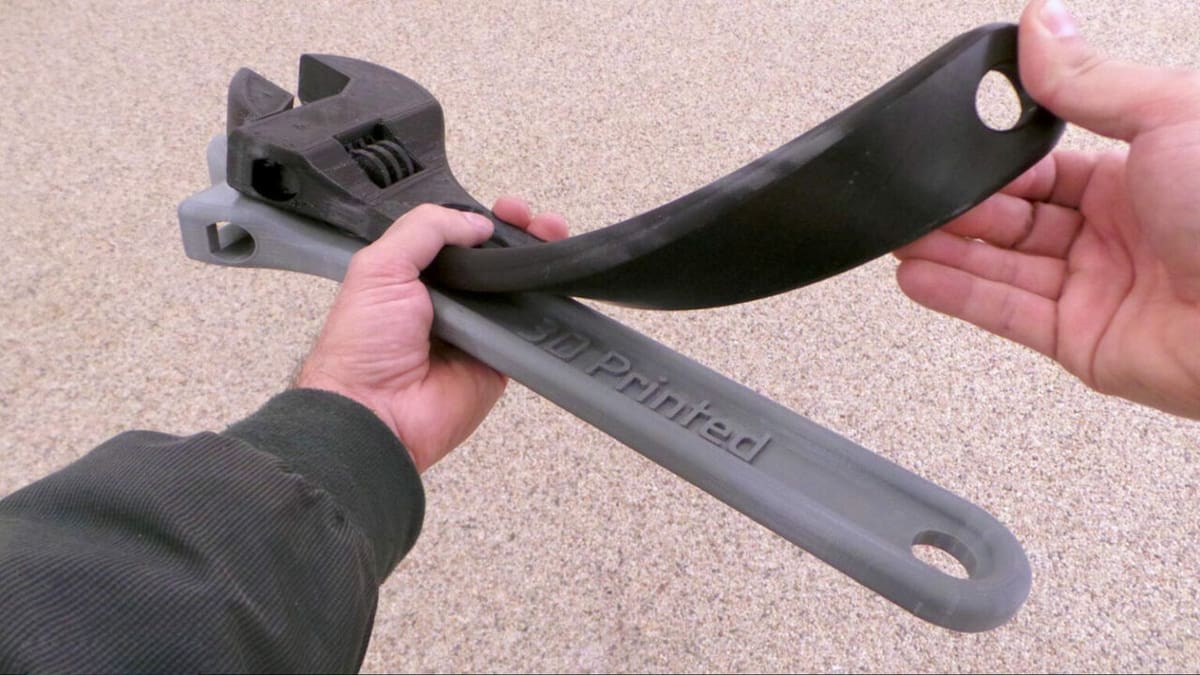
Flexible PLA has a lot in common with TPU. However, there are major differences between the two materials in terms of material composition, ease of printing, and post-processing.
Material Properties
While flexible PLA can bend and flex to some extent, it may not stretch as much as TPU before reaching its breaking point. TPU is generally more durable and abrasion-resistant than flexible PLA in conditions like repetitive stress and environmental exposure. TPU is inherently rubber-like, while flexible PLA will still have properties inherent to brittle PLA and can only stretch so far.
TPU is available with a wider variety of Shore hardnesses, most commonly between 75A and 95A, which is great for tailoring the properties to your application. Flexible PLA is most often found on the more rigid side of flexible filaments with a Shore hardness around 90A.
Printability
TPU and flexible PLA work best with direct extruders due to their flexibility and tendency to stretch during printing. Both require slower print speeds compared to rigid filaments to prevent extrusion issues and would do best with minimal retraction. One’s experience may be more dependent on the rigidity or Shore hardness of the flexible filament than the material type.
Flexible PLA and TPU generally adhere well to print beds and have minimal warping issues. Flexible PLA has a lower tendency to shrink as it cools compared to TPU but is especially prone to nozzle clogging. Using a larger nozzle size, such as 0.6 or 0.8 mm, can help ease printing with flexible PLA.
Drying the filament is absolutely essential prior to printing flexible PLA and is highly recommended prior to printing TPU. Flexible PLA is more likely than TPU to suffer from too much heat when layer times are short, and printing is done in an enclosure. Depending on how much retraction your printer setup can manage with flexible filaments, stringing is likely to be an issue with both flexible PLA and TPU.
Applications
Flexible PLA and TPU can both be food-safe, depending on the filament manufacturer and your own setup. This makes either a good choice for printing kitchen accessories, as well as parts that will come into frequent contact with your skin, like a watch strap.
Flexible PLA is great for printing toys and other decorative pieces that would benefit from some softness or flexibility. Since it’s not particularly durable, it’s not recommended for parts with more critical functions.
TPU has higher abrasion resistance and is more resistant to stress. It’s suitable for prints that may see frequent wear and tear like phone cases or bike accessories.
Post Processing
Overall, flexible PLA is simpler to post-process with standard methods, while TPU has more limited options. Flexible PLA supports are easy to remove manually, and the material sands easily with standard sandpaper.
In contrast, TPU’s flexible supports are harder to remove, and it cannot be sanded. Some resort to using a hair dryer or gentle heat to carefully melt away stringing.
Painting either flexible filament can be tricky, requiring only flexible paints formulated to flex instead of crack.
Examples
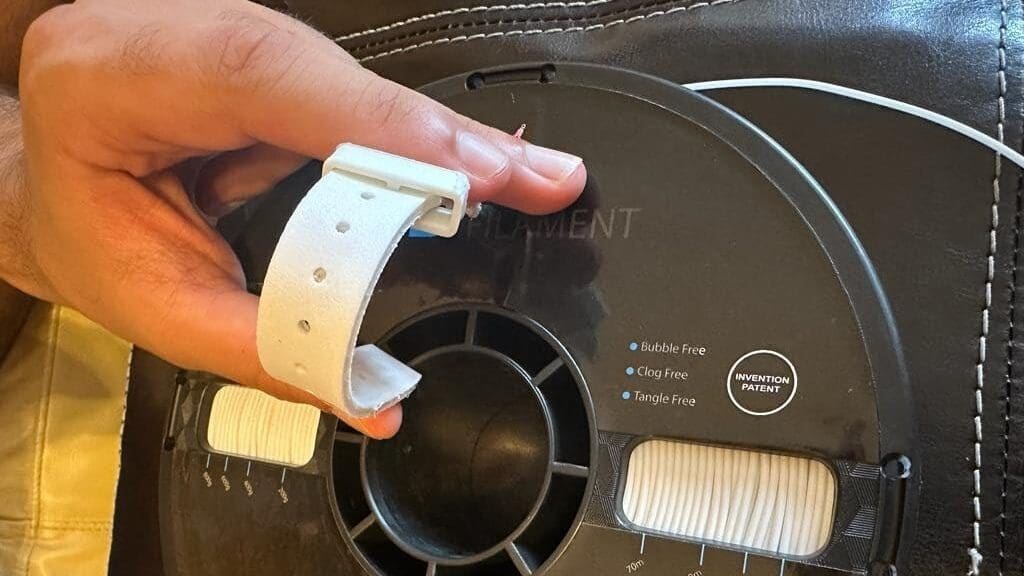
If you’re intrigued by this flexible variant of PLA, there are a handful of options out there you could try out. Here are a few of the most popular choices:
Flashforge
One of the softest PLA filaments, Flashforge Flexible PLA can stretch four times its original length. It offers great adhesion to the build plate and minimal warping. Prints come out rubbery and with a nice sheen to them. Nine different color options are available, giving you plenty of design options for your prints.
User reviews report some difficulty with printing, such as clogging and stringing. However, those who managed to tune in the right settings are quite satisfied with the filament. Starting with PLA settings but slowing down printing speed seems to be key to success.
Ataraxia Art
Ataraxia Art Flexible PLA is claimed to be able to stretch more than five times its original length and have a Shore hardness of 89A, making it the softest PLA filament out of the three presented here. The manufacturer emphasizes the need to keep this material dry, even providing a reusable vacuum bag to store the filament in. They also provide some troubleshooting tips so be sure to check those out before you start.
Users report success with printing this filament, thanks largely to the manufacturer’s tips. As expected, it may take some time to find the right settings, but once you’re dialed in, you can expect flexibility similar to TPU.
Orbi-Tech
This soft PLA from Orbi-Tech combines toughness and flexibility while still providing nice surface finishes. With a Shore hardness of 95A, you can expect it to feel like a rigid rubber or a typical TPU filament. Orbi-Tech claims the material is warp-free and offers it in eight different colors. Most notably, the manufacturing of this filament is compliant with food-safe standards.
In a side-by-side comparison to normal PLA, Casual Collisions demonstrated in a YouTube video that Orbi-Tech’s soft PLA could withstand being run over by a car with only minor defects whereas normal PLA shattered. However, under-extrusion issues that are common with soft PLA were also on display.
License: The text of "What’s Flexible PLA & How Does It Compare to TPU?" by All3DP is licensed under a Creative Commons Attribution 4.0 International License.
CERTAIN CONTENT THAT APPEARS ON THIS SITE COMES FROM AMAZON. THIS CONTENT IS PROVIDED ‘AS IS’ AND IS SUBJECT TO CHANGE OR REMOVAL AT ANY TIME.


